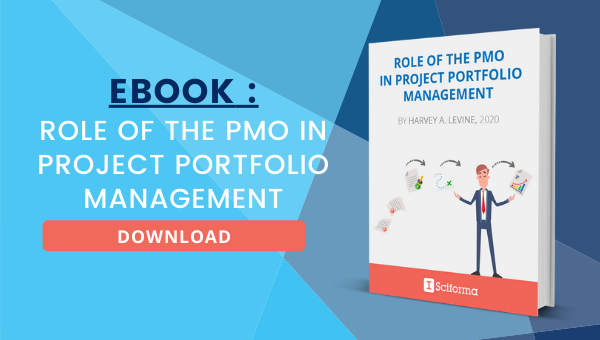If you are reading this, you probably have some interest in Project Management, PPM, or organizational transformation and change management. After all, there is little chance that you landed here by Googling “Best recipe for vegan chili.” Whether you are a PM enthusiast or project professional, it makes sense to wonder about the role of PMOs. Seasoned PMs, prominent PPM experts, even PMOs themselves struggle to agree on a definition for the Project Management Office. Perhaps because PMOs can play such a wide array of diverse roles that the function eludes characterization. Let’s still try to delineate the multiple roles of the PMO.
The Project Management Office: An Elusive Function
For the Project Management Institute — the go-to reference for PPM-related matters — the Project Management Office is “a management structure that standardizes the project-related governance processes and facilitates the sharing of resources, methodologies, tools, and techniques”
Wikipedia echoes this process-centric definition of the PMO while expanding on it. “A project management office…is a group or department within a business, government agency, or enterprise that defines and maintains standards for project management within the organization. The PMO strives to standardize and introduce economies of repetition in the execution of projects. The PMO is the source of documentation, guidance, and metrics on the practice of project management and execution.“
Now, according to Gartner’s Glossary, a PMO is “usually created to solve a specific problem: generally, the IT organization’s inability to deliver IT projects on time, on budget, and in scope.” We can see that the focus moves to problem resolution and business optimization. This definition also positions the PMO closer to the sphere of Information Technology.
PMO experts Eric John Darling and Stephen Jonathan Whitty (2016) provide yet a different perspective. He said, “The form and use of the structure we now call the PMO has evolved and adapted over time. In recent history the PMO has evolved to be the central repository for tools and methodologies for this non-operational work.” In addition to highlighting the centralizing role of the PMO, this approaches the role of the PMO dynamically.
Which is, perhaps, the best path to take to understand the nature, purposes, and roles of the Project Management Office.
The Evolution of the PMO
Origins and development
With the rise of scientific management methods and processes in the early 20th century, a surge in the number and complexity of projects managed by companies prompted the creation of a function dedicated to monitoring and coordinating project management. According to Darling & Whitty (2016), the first recorded use of the term “Project Management Office” occurred in the late 1930s. Then the function really started taking its current shape and scope in the 1950s.
Back then, the PMO was chiefly responsible for bringing projects in on time, on budget and on scope. In this regard, Project Management Offices were concerned with processing the daily business demands tied to the operational and budget management of projects, with a rather hands-on management style and a risk-averse, administrative stance. PMOs were expected to introduce consistency and replicability into the handling of project activities by defining and enforcing standard processes.
The 1980s and the rise of computer technology gave further momentum to the PMO function, which gained traction across new industries and sectors. With the publication of the first Project Management Body of Knowledge (PMBOK) by the PMI in 1996, Project Management as a structured discipline really gained prominence, further boosting the profile of the PMO.
As organizations across the globe recognized the need to improve the coordination and management of rising numbers of increasingly intricate projects, various kinds of PMOs were created to address different sorts of challenges and issues. This proliferation of local, context-specific PMO implementation initiatives has brought us where we are today: the term “PMO” is used across a breadth of contexts and encompasses varying responsibilities, job descriptions, and positions.
Modern-day incarnations of the PMO
Against the backdrop of heightened business uncertainty and market volatility, with changing society and consumer expectations, and particularly with the digital revolution, PMOs across geographies and industries have converged towards new responsibilities.
Although each PMO remains unique and although the function remains incredibly diverse, the roles of most Project Management Offices have evolved in the same direction: from control to enablement, from execution to strategization and innovation, from process to data-driven flexibility, from budget monitoring to value management. Today’s “evolved” PMOs typically address matters such as strategy alignment, investment optimization, talent management, calculated risk-taking, support to innovation and collaboration, cross-organization synergies, intelligent exploitation of rich data and smart tools, and much more.
We can see that the PMO really took a qualitative leap forward and expanded its horizons significantly. Which accounts for the even greater diversity of modern-day PMOs. According to the line of business and shape of the organization and according to the specific challenges and opportunities it faces, the PMO may have very different focuses. Some are created to solve specific pain points and remediate targeted inefficiencies. Some are tasked with preparing the business for the future, with focus on innovation and digital transformation. Others are implemented to address financial value optimization concerns. The list is endless.
Key Roles of Today’s PMOs
We’ve established that the diversity of Project Management Offices worldwide is thwarting attempts at providing an unambiguous and comprehensive definition of the PMO. However, most PMOs share common responsibilities. Here are a few of them.
Activity monitoring
Despite having veered away from control and supervision to embrace a more enabling stance, the PMO is still concerned with process standardization and monitoring, at least to some extent. PMOs come up with sets of processes and methodologies designed to standardize the management of project activities at the firm level. These standard guidelines usually govern the management of project life cycles from ideation to delivery. The methodological framework also includes best practices and standard metrics. It may be formalized in an official Project Charter that is shared across the various departments and business lines of the organization.
The goal of this standardization effort is to improve consistency and drive comparability across projects. And ultimately to improve the overall performance of project activity. For this reason, the PMO also needs to make sure that the process and best practices are actually applied. As the guardian of the process, a Project Management Office oversees the execution cycle to ensure that projects stay within deadline, budget, and scope while seeing to it that the expectations of primary and secondary stakeholders are met. This involves control and policy enforcement, but also support to project managers and to the other populations of workers that may be involved in projects.
The ability to effectively mix team supervision and enablement is of increasing importance as growing numbers of businesses and organizations turn to Agile delivery frameworks, which emphasize team empowerment and responsiveness.
Data and tool management
In the digital age, data has become THE key resource for Project Management Offices. The ability to collect and manipulate large sets of data effectively is more often than not a make-or-break factor in the success of a PMO. Accordingly, the selection and implementation of powerful tools to leverage data intelligence is of vital importance for PMOs.
Not only do modern-day PPM tools consolidate project-related information and automate repeatable tasks, but this kind of specialized software also provides an expansive battery of smart functionality to extract valuable insights from data. Project Portfolio Management platforms offer capabilities for value and risk modelling, scenario simulation, dynamic optimization of portfolios and resource allocation, and more. The key challenge for Project Management Offices is to make sure that the PPM software tool they choose and roll out is suited to the specific challenges and requirements of their organization.
For PPM tools are just like PMOs: there’s no one-size-fits-all!
Support for improved collaboration
Another trait of the era we’re living in is the growing importance of collaboration. Digital systems are connecting everything and everyone across the globe. Those organizations which detect and leverage the opportunities for synergies will eventually be the winners. Highly-effective and successful businesses are breaking down silos across teams, departments, and functions. They encourage co-construction, skill sharing, cross-functional ideation, or innovative hybridation.
This is why Project Management Offices strive to promote interactions and collaboration.
To that end, PMOs implement and ensure proper adoption of collaborative tools to enable instant and easy communication across teams regardless of geographies. They may also roll out training, learning or team-building programs to hone employee soft skills. They may encourage diversity and inclusion, promote a culture of trust and constructive feedback, or ensure the quality of the work environment to improve employee experience and cultivate creativity.
This effort actually goes hand-in-hand with the process and practice standardization role of the PMO. While the enforcement of unified processes provides top-down alignment, the dissemination of a common culture and vision through increased interaction is a bottom-up way of fostering organization-wide consistency — while opening the door for serendipity and innovation.
Strategic portfolio management
Professionals involved in project activity should always have a clear line of sight to the end-goal: to maximize value and benefits for the organization. Now, what is “value”? True, value is a financial concept, and return on investment is a key consideration. But such a universal definition fails to account for the subjective dimension of value. What’s valuable to me may not have the same worth in your eyes. Similarly, a Taiwan-based high-tech manufacturer and a diner chain in the American Midwest may not share the same definition of value. They’ll both use the same financial metrics (ROI, NPV, payback horizon and so on), but they’re unlikely to have the same goals and strategies. For one of these businesses, a key driver of growth may be international expansion and R&D investment optimization, while the other might focus on improving customer retention and brand image.
With that in mind, Project Management Offices actively support the realization of their organization’s strategy by putting together relevant portfolios of projects and by optimizing them strategically. Managing collections of related projects as portfolios enables them to maximize efficiency. Even more importantly, it clarifies the purpose of project activity. It makes apparent the strategic objectives pursued through projects, thereby promoting alignment and focusing the effort on a shared vision of success.
The role of the PMO in managing and optimizing project portfolios is therefore critical. Project Management Offices help build solidly diversified portfolios with considerations of the interdependencies between projects (for instance shared resources) and of their respective risk profiles. They strategize the selection of projects for the pipeline by implementing processes designed to help prioritize aligned projects. They also monitor and optimize the make up of portfolios over time to maximize the chances of attaining strategic objectives.
PMOs Evolve Over Time
When retracing the evolution of PMOs, we haven’t mentioned a key trait of modern PMOs: they are constantly evolving their role and place in the organization. The PMO has become an intrinsically dynamic function designed to help organizations to steer the course of their business in increasingly turbulent market conditions.
PMOs typically start small and gradually expand the spectrum of their activities and responsibilities. For example a PMO may start out as a Project Office, primarily tasked with delivery oversight. Then it may evolve into a basic PMO focused on providing standard, repeatable project management methodologies. Then morph into a more advanced form of PMO, with emphasis on establishing capabilities to support a cohesive project environment and achieve business integration. And finally transform into a “Centre of Excellence” focused on strategy alignment.
But the maturation and evolution stages of Project Management Offices may also be less “predictable” and involve changes of directions or qualitative leaps forward.
Again, that’s dependent on the unique requirements and opportunities that the organization faces in a specific context. What matters is the following: in order to stay relevant and valuable, a Project Management Office should continuously reinvent itself.
Your PMO
This article has strived to describe the key roles of the PMO. While we’ve managed to cover a number of topics, we’ve left out many other aspects of the PMO’s action, such as resource and budget management, skill development, program management, data security and regulatory compliance, product management… In fact Hobbs & Aubry (2010) have identified no fewer than 27 distinct functions of PMOs. A decade later, it is safe to wager that many more have sprung to life. In sum, the PMO dons so many roles that it’s bound to get an Oscar sooner or later!
From a business leader perspective, the versatility of the PMO has one key implication: your PMO can be and do anything that you need it to. Your PMO is the joker in your deck. And it may well win you the game.
For more information about PMOs:
- Which Type of Company uses a Project Management Office?
- What are the advantages of Project Management Offices?







Benoît Boitard
Benoît has multiple professional experiences, working in particular as a digital strategy consultant, both in emerging start-ups and in large companies. These diverse experiences have imbued him with a global vision of project management in traditional and agile working environments.